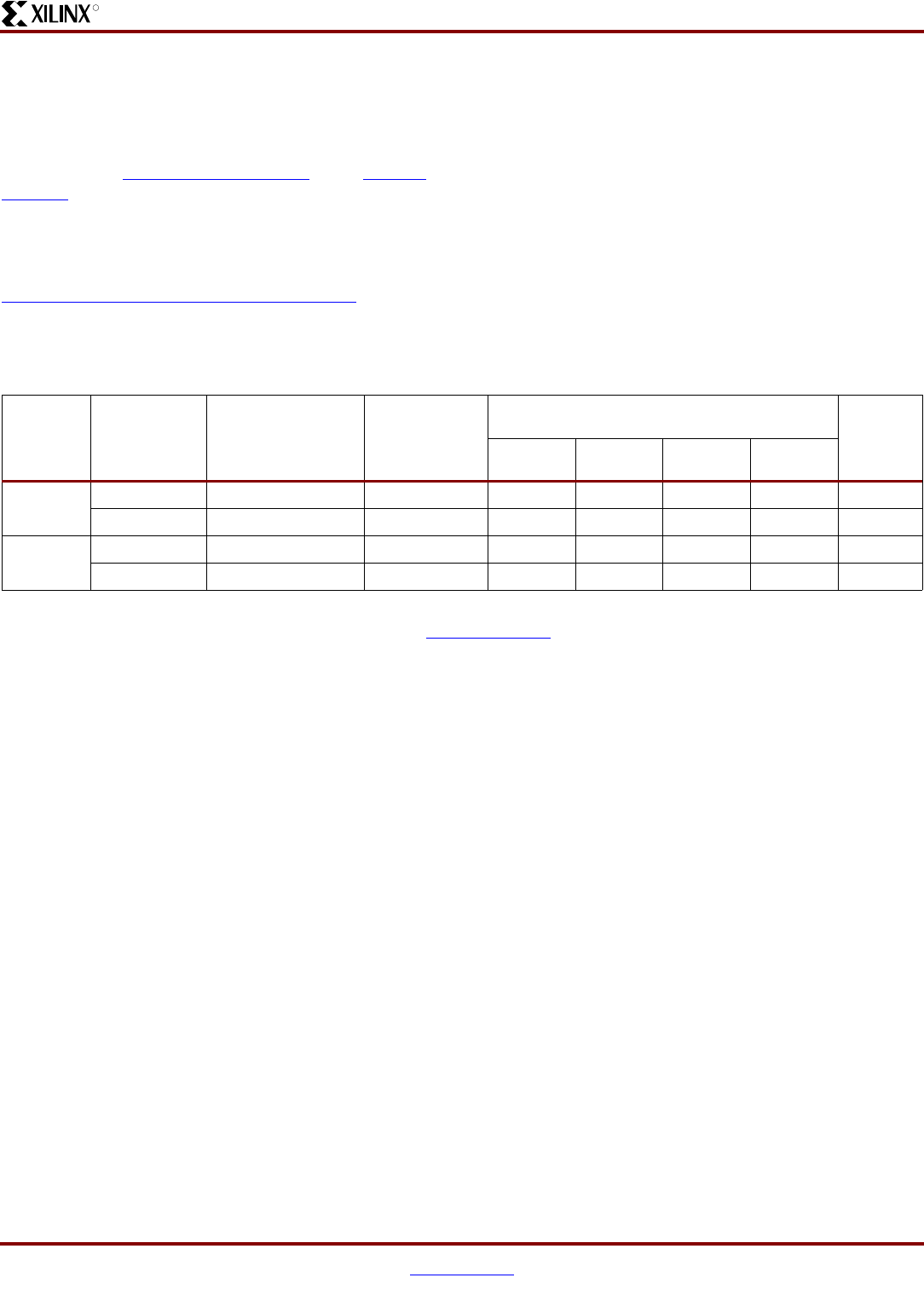
Pinout Descriptions
DS610-4 (v2.0) July 16, 2007 www.xilinx.com 61
Product Specification
R
Package Thermal Characteristics
The power dissipated by an FPGA application has
implications on package selection and system design. The
power consumed by a Spartan-3A DSP FPGA is reported
using either the XPower Power
Estimator or the XPower
Analyzer calculator integrated in the Xilinx ISE™
development software. Table 59 provides the thermal
characteristics for the various Spartan-3A DSP device
package offerings. This information is also available using
the Thermal Query tool at
h
ttp://www.xilinx.com/cgi-bin/thermal/thermal.pl.
The junction-to-case thermal resistance (θ
JC
) indicates the
difference between the temperature measured on the
package body (case) and the die junction temperature per
watt of power consumption. The junction-to-board (θ
JB
)
value similarly reports the difference between the board and
junction temperature. The junction-to-ambient (θ
JA
) value
reports the temperature difference between the ambient
environment and the junction temperature. The θ
JA
value is
reported at different air velocities, measured in linear feet
per minute (LFM). The “Still Air (0 LFM)” column shows the
θ
JA
value in a system without a fan. The thermal resistance
drops with increasing air flow.
Table 59:
Spartan-3A DSP Package Thermal Characteristics
Package Device
Junction-to-Case
(θ
JC
)
Junction-to-
Board (θ
JB
)
Junction-to-Ambient (θ
JA
)
at Different Air Flows
Units
Still Air
(0 LFM)
250 LFM 500 LFM 750 LFM
CS484
CSG484
XC3SD1800A 3.5 7.5 18.5 13.5 12.5 12.0 °C/W
XC3SD3400A 3.0 6.5 18.0 12.5 11.5 11.0 °C/W
FG676
FGG676
XC3SD1800A 5.0 8.5 16.5 12.0 11.0 10.5 °C/W
XC3SD3400A 4.0 7.0 15.5 11.0 10.0 9.5 °C/W
Notes:
1. Advance data based on simulation - check for updates in the Thermal Query tool.
